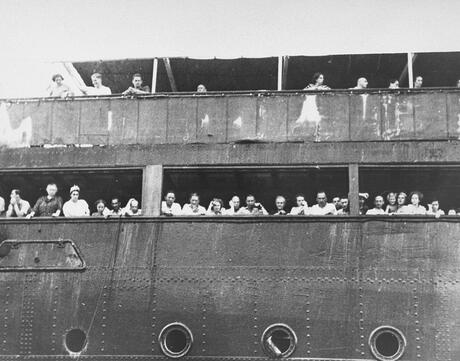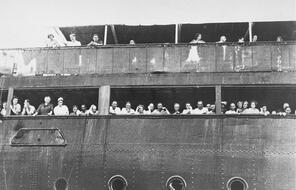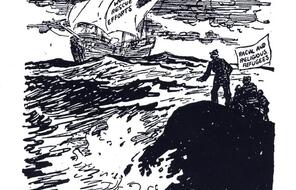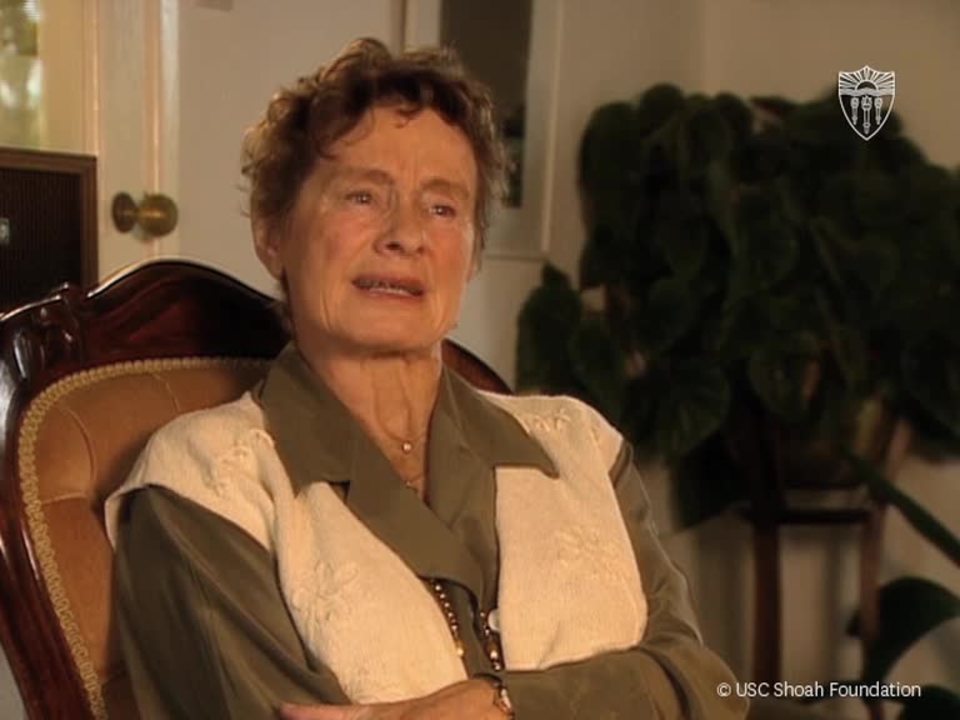Germany’s aggressive steps to expand its borders in 1938 touched off both an international political crisis, as world leaders scrambled to avoid war, and a humanitarian refugee crisis, as hundreds of thousands of people, mostly Jews, sought safety from the Nazis.
The annexation of Austria into the Third Reich spelled terror for the 200,000 Jews in that country. Within weeks of the Anschluss (a term used to refer to the union of Germany and Austria in 1938), foreign journalists in Austria were reporting hundreds of antisemitic incidents throughout the nation. Some noted a sharp increase in suicides, as thousands of Jews tried desperately to emigrate only to encounter roadblocks wherever they turned. Their difficulty in leaving “Greater Germany” was not with the Nazis, who, faced with the problem of including an additional 200,000 Jews in the Reich, were eager to see Jews leave the country as long as they left their money and other possessions behind. The problem was with other nations, most of whom had no interest in accepting thousands of penniless Jewish refugees. US President Franklin Roosevelt believed he did not have the public’s support to ask Congress to change the quota system under which immigrants were admitted. In one poll, 67% of Americans said that the United States should keep Jewish refugees out.
Instead, Roosevelt called for an international conference at Evian, France, to discuss the growing crisis. Yet none of the countries that gathered, except the Dominican Republic, pledged to help. Only M. J. M. Yepes of Colombia, a professor who also served as the legal advisor to his country’s permanent delegation to the League of Nations, addressed the real issue at the Evian conference. He told delegates that there were two central questions that they must confront. One was a factual question that each nation had to answer for itself: How many refugees would it admit? The other question involved a matter of principle: “Can a State, without upsetting the basis of our civilization, and, indeed, of all civilization, arbitrarily withdraw nationality from a whole class of its citizens, thereby making them Stateless Persons whom no country is compelled to receive on its territory?”
Yepes went on to say that as long as that central problem was not decided, the work of the conference would not be lasting and a dangerous example would be set—an example that in his view would make the world “uninhabitable.” But most delegates did not want to deal with either issue.
The events of Kristallnacht in November 1938 only increased the urgency felt by hundreds of thousands of Jews to leave the Third Reich. But both public opinion and political will against admitting refugees held strong in most countries, including the United States.
Nevertheless, there were some successful rescue efforts, as some individual activists and diplomats devised ways to issue visas to allow Jews to emigrate. Also, a group of Christians and Jews in England responded with a plan to rescue Jewish children from the Nazis. In the operation known as the Kindertransport, 10,000 children under the age of 17 were brought to England between December 1938 and September 1939. The rescue effort was focused on children because the organizers feared the British would see adults as competitors for jobs, housing, and social services. Children were forced to separate from their parents (often permanently), and they were placed in English homes, schools, and farms, where they were raised at least through the war years.
Despite the difficulties of emigration, by 1939, nearly half of the 1933 Jewish population of Germany had left the country. Many more were desperate to obtain visas to get out. Among those who had the “right papers” were the 937 men, women, and children who boarded a ship, the St. Louis, in Hamburg, Germany, on May 14. The voyage of the St. Louis has become both a symbol of the refugee crisis and a cautionary tale about the indifference of countries to the plight of those in danger outside their borders. As the St. Louis neared Cuba, the Cuban government, in response to pressure from Cubans opposed to increased Jewish immigration, suddenly canceled the landing permits of all Jewish passengers (30 non-Jews were permitted to enter the country). The ship left Havana and sailed along the Florida coast, hoping to obtain permission for the passengers to enter another country in North or South America. No permission was granted. On June 7, the captain had no choice but to return to Germany with most of his passengers still on board. The Nazis turned the incident into propaganda. They claimed that it demonstrated that Jews were universally disliked and distrusted. On June 10, Belgium accepted 200 passengers from the St. Louis. Two days later, the Netherlands promised to take in 194. Britain and France admitted the rest.
Furious at the role the US government had played in the crisis, a resident of Richmond, Virginia, wrote:
[The] press reported that the ship came close enough to Miami for the refugees to see the lights of the city. The press also reported that the U.S. Coast Guard, under instructions from Washington, followed the ship . . . to prevent any people landing on our shores. And during the days when this horrible tragedy was being enacted right at our doors, our government in Washington made no effort to relieve the desperate situation of these people, but on the contrary gave orders that they be kept out of the country. . . . The failure to take any steps whatsoever to assist these distressed, persecuted Jews in their hour of extremity was one of the most disgraceful things which has happened in American history and leaves a stain and brand of shame upon the record of our nation.









